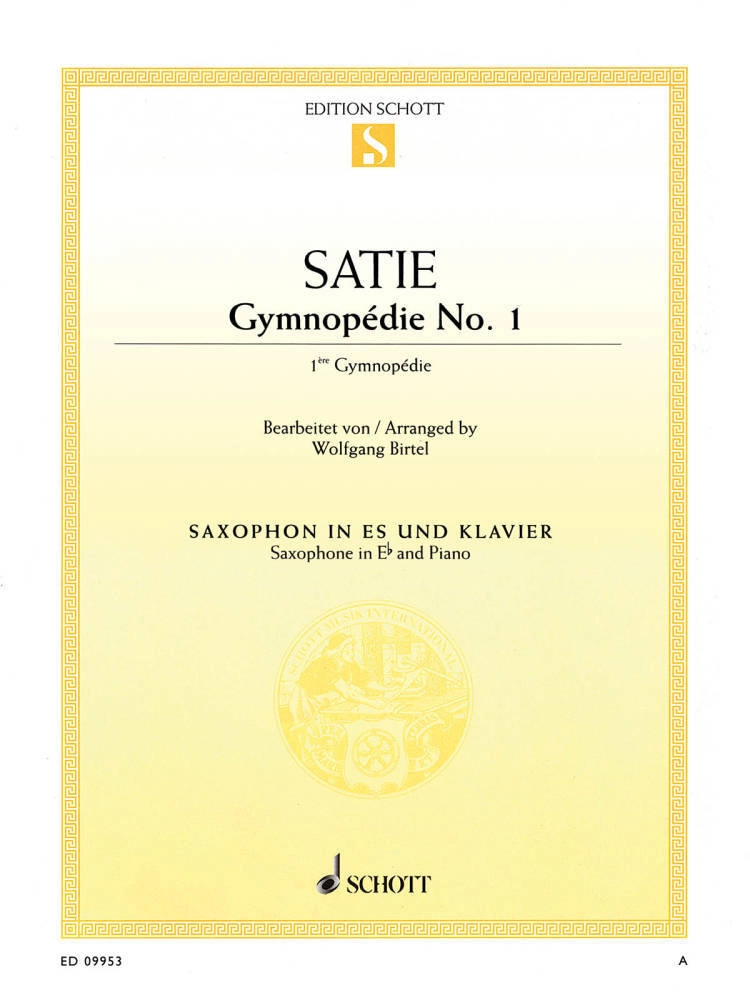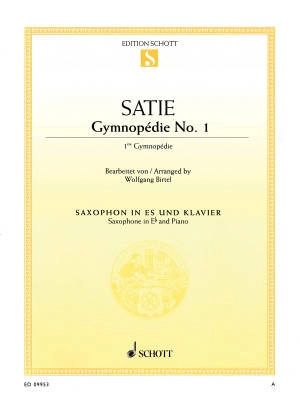Opens in a new window
Schott Gymnopedie No.1 - Satie/Birtel - Alto Saxophone/Piano

- Author/Composer:
- SATIE, ERIK
- Instrumentation:
- SAX ALTO
- Model #:
- 49044150
Arranger: Wolfgang Birtel
Format: Sheet Music
Instrumentation: Alto Saxophone and Piano
Level: Easy to Intermediate
The music scene took notice of Erik Satie (1866-1925) all of a sudden: The world premiere of his ballet 'Parade' on 18 May 1917 caused quite a scandal. The production which involved Sergey Diaghilev with his 'Ballets Russes', Pablo Picasso (scenery and costumes), Jean Cocteau (story) as well as Leonide Massine (choreography) divided the music scene of Paris, yet made the composer widely known. Satie who hardly had had any solid musical training and lived in Paris for almost all his life developed a new musical style, in deliberate rejection of the 'Wagnerisme' of his time.
Classical form models, new harmonies, stylistic ease, meditative and clownish elements amalgamated in an original way, the perfect example being his '3 Gymnopedies' of 1888 the first of which was here arranged for a solo instrument with piano accompaniment: Thus, it is now possible, even for non-pianists, to play this famous miniature by Satie. Thanks to its easy playability, it can also be used for educational purposes.
Q & A
There are currently no questions for this product.
Reviews
There are currently no reviews for this product. Be the first to write one!




